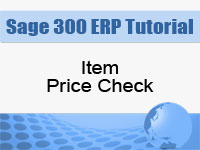There is some debate as to whether an investment in a warehouse management system for a production, distribution, transportation, third party logistics or other supply chain company is worth the money and the implementation time. Instead of keeping employees doing rote and simple tasks, a warehouse management system allows businesses to utilize their employees’ talent knowledge and expertise to make the business bigger and better. The following are some of the most important reasons why many manufacturing companies invest in warehouse management systems:
- System Integration
System integration within warehouse management systems has multiple facets that streamline operations including ERP integration, web access, and wireless and PDA device capabilities. Being able to integrate accounting systems with inventory management and order billing systems is crucial to accurate efficiency. Tracing orders and inventory according to the preferred method of accounting expedites the billing, payment and reordering process. Web access allows for remote control of warehouse operations and does not require reliance on an internal network. Wireless devices such as PDAs help to expedite the warehouse processes by making scanning and data entry convenient. - Data
Efficient and accurate data collection is crucial to the long-term success of a business. Without fast order-processing, accurate inventory and shipping information, and impartial data, a company cannot function well or have a measurable metric for success. Without a success metric, improvements cannot be made and the business stalls and subsequently fails. Data collection via scanning not only improves the speed of data input by eliminating the need for human re-entry into various systems, but also improves the quality and completeness of the data collected. - Universality of Product Sales
E-commerce has been taking off for the past decade and now it is fast becoming the most common purchasing method for not only consumers but also businesses. Because of that, orders come in from around the world and need to be shipped and payment received in various currencies. A warehouse management system can handle the incoming orders more efficiently, create organized pick lists, and generate shipping labels and advance ship notices for a huge variety of customers. Being able to accommodate more specific requirements with less hassle translates into more sales with more unique customers. - Tracking
With the modern age of technology, more companies are looking to GPS and RFID for tracking all aspects of their business. From individual merchandise to large shipments to trucks transporting the goods, tracking is now a necessity. Tracking allows for visibility of the entire business and creates the opportunity to adjust according to changes in plans. For instance, if a snow storm hits the route the trucks take to make a large delivery to a customer, knowing exactly where the vehicles are and being able to adjust their arrival time helps to notify the customer and plan ahead for other scheduling conflicts. - Visibility
Knowing all aspects of the business at a click of a button is a huge benefit of warehouse management software. It increases management’s ability to schedule and plan all areas of the business in addition to being able to make adjustments if things do not go as planned. It also lowers costs associated with missed deliveries, lost merchandise and dissatisfied customers that occur when the only information available is via paper invoices and phone calls. Increased visibility leads to increased business intelligence. - Business Intelligence
With data collection, availability, and visibility, a company can become more intelligent about the way it operates. If there isn’t a method of measurement for a process of operations, there is no way to quantify if it is successful, needs to be improved or if it is failing. By looking at the data and operations, better decisions can be made about which processes to improve, where those improvements need to be made and how to make those changes. Once the data is being collected, a business intelligence system can even be installed to help make those decisions. - The Bigger Picture
The less time spent focusing on the everyday details, the more time there is to focus on the health and growth of the business. Putting all of the capabilities of a warehouse management system together with the improved visibility of the company as a whole allows for the bigger picture to emerge. If managers are wasting their time and talent checking paper orders and trying to fix problems with warehouse organization, wrong orders, missing inventory, and late shipments, they aren’t spending time investing in the growth and development of the business. The use of a warehouse management system will revolutionize your business.





 Download our corporate brochure for more facts about us, our
clients and our solutions.
Download our corporate brochure for more facts about us, our
clients and our solutions.
 Driving Revenue Growth 1
Driving Revenue Growth 1 Satisfying Customers 1
Satisfying Customers 1